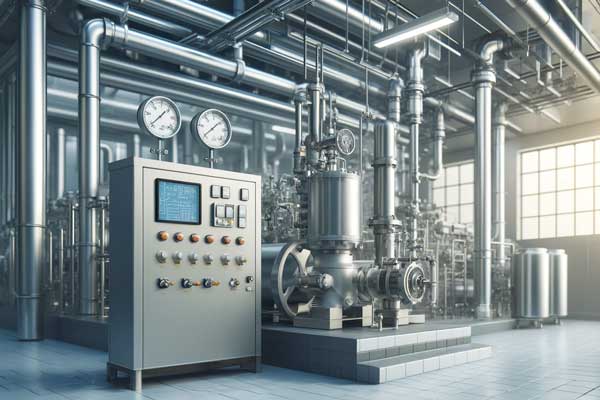Lobe pumps are incredibly versatile machines that are used across industries, from food processing to chemical manufacturing. But if you want to get the most out of them, there are a few factors you need to keep an eye on—like the viscosity of the fluid, pump speed, pressure differentials, and temperature. By understanding and tweaking these factors, you can significantly improve your pump’s performance, reduce energy consumption, and extend its lifespan. Let’s break down these key elements that impact lobe pump efficiency and talk about how optimizing design and operating conditions can make all the difference.
Understanding Lobe Pump Efficiency
Lobe pumps work by rotating lobes that trap and move fluid between the lobes and the pump casing. To achieve optimal efficiency, you need to balance external factors (like the fluid type) and internal ones (like pump design). Finding that sweet spot doesn’t just improve performance, it also lowers energy costs and cuts down on the time you spend maintaining the pump.
Fluid Viscosity: A Major Factor in Pump Efficiency
Fluid viscosity, or how resistant a liquid is to flowing, plays a huge role in how well a lobe pump works. Fluids can range from thin, like water, to thick and sticky, like syrup or oil—and each comes with its own set of challenges.
High Viscosity Fluids
- Challenges: Moving thick fluids takes more energy and can slow down flow rates. This makes the pump work harder, leading to more wear and tear and higher energy bills.
- Solutions: If you’re dealing with thick fluids, it’s crucial to pick a pump designed for high-viscosity applications. Adjusting the pump’s speed and power settings also helps. Go for a pump made of durable materials and run it at a slower speed to avoid damaging the pump or causing excessive wear.
For more details, check out our guide on the best pumps for thick fluids.
Low Viscosity Fluids
- Challenges: Low-viscosity fluids can cause cavitation, especially if the pump is running too fast. Cavitation creates air pockets that reduce efficiency and can damage the pump over time.
- Solutions: To prevent cavitation, lower the pump speed and ensure the pump is the right size for low-viscosity fluids. This adjustment keeps everything running smoothly and protects your equipment.
The Impact of Pump Speed (RPM)
The speed at which the lobes rotate, measured in RPM, is another crucial factor in pump efficiency. Lobe pumps are typically designed to operate at a specific RPM range. If you run the pump too fast or too slow, you risk inefficiencies and increased wear.
High RPM
- Challenges: Running a pump at high RPMs can wear out the components faster, increase energy use, and shorten the overall lifespan of the pump. Plus, with low-viscosity fluids, higher speeds can worsen cavitation issues.
- Solutions: If you need higher flow rates, consider using a larger pump with a lower RPM setting. This keeps the strain on the pump low while maintaining efficiency.
Low RPM
- Challenges: If the pump is running too slowly, particularly with thick fluids, the flow becomes sluggish, which reduces efficiency and can even prevent the fluid from fully transferring.
- Solutions: Using adjustable-speed drives or selecting a pump tailored to the viscosity and flow rate of your fluid is key. By balancing RPM with the fluid’s characteristics, you’ll get better performance and extend the pump’s life.
Pressure Differentials and Their Role in Efficiency
The pressure difference between the pump’s inlet and outlet is another critical factor. When the pressure differential is too high, the pump has to work much harder, but if it’s too low, the fluid won’t move consistently.
High Pressure Differential
- Challenges: A significant pressure difference between the outlet and inlet means the pump needs more power to push the fluid, increasing energy consumption and wear.
- Solutions: To reduce the pressure differential, consider using pressure relief valves or lowering the outlet pressure. Also, make sure the pump is sized and designed for high-pressure situations to keep everything running smoothly.
Low Pressure Differential
- Challenges: If the pressure differential is too low, the fluid may not flow properly, leading to inconsistent performance or incomplete discharge.
- Solutions: Adjust the pump’s operational settings to better match the system’s pressure needs, and ensure it’s working within its designed pressure range for optimal efficiency.
How Temperature Affects Pump Efficiency
Temperature can change both the viscosity of the fluid and the materials in the pump itself. As the temperature increases, most fluids become thinner (lower viscosity), and as it decreases, they thicken. It’s also important to ensure the pump materials can handle these temperature changes.
High Temperature
- Challenges: Higher temperatures tend to lower the viscosity of fluids, making them easier to pump. However, some pump materials might degrade or lose strength at elevated temperatures.
- Solutions: Choose pumps made from materials that can withstand high temperatures without affecting performance. Stainless steel, for instance, is a great choice because it’s durable and resistant to heat.
Low Temperature
- Challenges: Cold temperatures increase fluid viscosity, making it harder to pump and putting extra strain on the pump’s components.
- Solutions: Consider pumps with seals or elastomers designed for low-temperature operations. Preheating the fluid before it enters the pump can also help reduce viscosity and make the pumping process smoother.
Optimizing Pump Design and Operating Conditions
To get the best performance out of your lobe pump, both the design and the way you operate it need to be dialed in. Here are a few ways to optimize efficiency:
- Custom Pump Design: Tailoring the pump’s materials and components to match your specific application can make a big difference. Choosing the right seals, lobes, and materials can reduce wear and extend the pump’s life.
- Regular Maintenance: Like any machine, keeping your pump in good shape is key to maintaining its efficiency. This includes inspecting for wear, replacing damaged parts, and ensuring everything is properly lubricated.
- Monitoring Systems: Many modern pumps come equipped with sensors and control systems that track things like flow rate, pressure, temperature, and pump speed. These systems allow you to make real-time adjustments to keep the pump running as efficiently as possible.
Conclusion
Lobe pump efficiency is influenced by several factors, such as fluid viscosity, pump speed, pressure differentials, and temperature. By understanding these elements and optimizing both the pump design and operating conditions, you can significantly boost performance, cut down on energy use, and prolong the life of your pump. With the right pump and proper maintenance, you’ll achieve maximum efficiency and cost savings.


